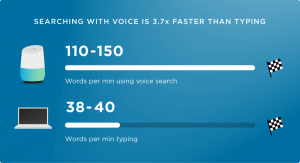 Over the past few years we have noticed many and varied trends that impact our workplace. Some of them already exist today, but their importance will grow and become more common in the year ahead.
Over the past few years we have noticed many and varied trends that impact our workplace. Some of them already exist today, but their importance will grow and become more common in the year ahead.
Most business topics over the past year have been focused on finding the right talent, overtime and compensation, the demise of the annual performance review, the skills and leadership gap, the rise of Generation Z and the shift to the gig economy. These trends have all impacted how companies recruit, retain, train and structure their workforce for the future.
So, what are some of these workplace trends that can significantly impact all types of businesses? This article will examine three of those trends and we will look at others in the coming months.
1. The Rising Trend of the Blended Workplace
The gig economy has become a major trend impacting the global workforce, and has created a new kind of diversity, with full-time permanent employees working side-by-side with freelancers. A study exploring the gig economy found that 93% of companies already identify the blended workforce as they’re seeing freelance workers teaming up with employees to work on projects together. In an attempt to solve key problems and cut costs by eliminating healthcare and other employee benefits, more companies are beginning to hire on-demand. Thus, more freelancers and full-time workers will need to work together
2. Annual Performance Reviews Disappearing
The annual performance review is coming to an end world-wide as generation Zs and millennials expect and are currently receiving feedback more frequently. Global supervisors and managers are providing observations and counseling daily (19%), weekly (24%) or regularly (23%). Two of the largest companies in the world, GE and Adobe, have already eliminated their annual review process and put into effect a program of regular feedback. Adobe created a “Check-In” system, where goals and expectations are set annually but feedback is given regularly, resulting in a 2% decrease in voluntary attrition. GE followed suit by created “ Touchpoints,” where there is a daily development focusing on results and changing business demands, which has resulting in a five times increase in productivity in the past year.
3. Overtime and Employee Classification Changing
The news reports have been filled with the new regulations regarding overtime and employee classification scheduled to go into effect on December 1, 2016. In case you have not noticed, the Department of Labor (DOL) published regulations last year that will increase the threshold salary for exempt employees from $ 23,660 annually to $ 47,476. The change is going to affect basic business operations, particularly in retail and some service businesses. Many employees who are now classified as “managers” and exempt from overtime, will be misclassified based on their salary alone, not counting the duties test.
According to a 2014 Gallup poll, the average full-time employee in their sample of 1,271 worked 47 hours a week, almost an entire extra day at the office. There are several ways to manage this change but you must make act now.
While these are some of the trends we have identified over this last year, the election of a new U.S. president will surely bring significant changes – no more “business as usual.” Stay tuned for changes to the Affordable Care Act, wage and hour laws, immigration, and anti-discrimination regulations. Be prepared for uncertainty in U.S. employment and labor law in 2017 and beyond.
Business & Finance Articles on Business 2 Community(89)








